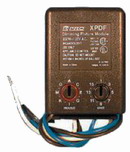» Need Electrical Help? Ask the Electrician
School Automation Project
 |
By Dave Rongey
Summary: Electrical Troubleshooting Question about Home Automation: Hello I am a senior in high school and I am working with a group on an Economics Business plan project. © By: Dave Rongey |
School Automation Project
School Automation Project
Hello I am a senior in high school and I am working with a group on an Economics Business plan project.
Our product idea is a device which monitors the electrical usage in your home, including appliances, AC, lights,fans, and anything plugged into a circuit.
The device will be a wall mounted touch screen, and our primary concern is being able to link the screen and its monitoring components up to each individual circuit.
Do you think that an idea like this would even be possible in a house that is already built and finished, or only in a new house where the drywall has not been finished?
Also do you think that the concept of plugging into each individual circuit is even feasible? I was think maybe if you could find a source wire group entering each room you could in concept tap into it at that point and from there determine which wire goes to what device and save time wiring the system in. Your response and time is greatly appreciated, and you will be cited in our research and sources section as an important link to the overall success of this idea. Thank you again, Sincerely Kevin Z.
Hi Kevin - Great Electrical Repair Question!
I once work on a similar idea a few years ago. Let me see if I can dig up my notes on it, and I'd love to see what your group puts together. Your question about being able to install such a system in an existing home?, well the answer is yes. Due to more and more sensors and monitoring devices available today it is possible do this and a lot more. here is an example: I worked on a project at a hospital where I installed several digital energy monitoring devices which were wired with cat5e cable to a central building automation system, the Johnson Control MetaSys, where we created identifiers for these devices which were in turn read through display screens that were created displaying real-time information. These devices were also assigned addresses which were monitored by anyone whom had access.
In a more simple installation I have installed a similar device to a home which had a rental unit where the power was fed to a 100 amp sub-panel from the main home panel. The owner did not want to pay for the renters energy usage so a energy monitor was installed which used a set of C-T's or Current Transformers. These CT's are devices that clamp around the power conductors and produce an analog value based upon the current flowing through these devices. As they are called, they basically work off the same principle as a transformer. This energy monitoring device produce a digital reading that the home owner would record and produce an energy bill from.
Dave
From: Kevin Z.
Thank you so much for your quick reply it is much appreciated because I understand that you have a very busy schedule. I had thought about such a device that used the right hand rule of monitoring current flow through a clamp on type device and I was only hoping that such a device existed. I will continue to do research on this and my only other question would be an estimate of wire required and possible the type of wire. I am looking to just use the outputs on the circuit breaker to keep is simple.
Thank you again and i will cite you as a major resource in my project.
Sincerely,
Kevin Z.
The Safest Way to Test Electrical Devices and Identify Electric Wires!The Non-Contact Electrical TesterThis is a testing tool that I have had in my personal electrical tool pouch for years, and is the first test tool I grab to help identify electrical wiring. It is a Non-contact tester that I use to easily Detect Voltage in Cables, Cords, Circuit Breakers, Lighting Fixtures, Switches, Outlets and Wires. Simply insert the end of the tester into an outlet, lamp socket, or hold the end of the tester against the wire you wish to test. Very handy and easy to use.
The Quickest Way to Check for Faulty Electrical Wiring!The Plug-In Outlet TesterThis is the first tool I grab to troubleshoot a problem with outlet circuit wiring. This popular tester is also used by most inspectors to test for power and check the polarity of circuit wiring. It detects probable improper wiring conditions in standard 110-125 VAC outlets Provides 6 probable wiring conditions that are quick and easy to read for ultimate efficiency Lights indicate if wiring is correct and indicator light chart is included Tests standard 3-wire outlets UL Listed Light indicates if wiring is incorrect Very handy and easy to use.
Strip Off Wire Insulation without Nicking and Damaging the Electric Wire!The Wire Stripper and Wire CutterMy absolute favorite wire stripping tool that I have had in my personal electrical tool pouch for years, and this is the tool I use to safely strip electrical wires. This handy tool has multiple uses: The wire gauges are shown on the side of the tool so you know which slot to use for stripping insulation. The end of the tool can be used to grip and bend wire which is handy for attaching wire onto the screw terminals of switches and outlets.. The wire stripper will work on both solid and stranded wire. This tool is Very Handy and Easy to Use. |
||
Residential Electrical Parts and AccessoriesLight Switches 120volt Outlets Circuit Breakers Electrician Tools Voltage Testers |














